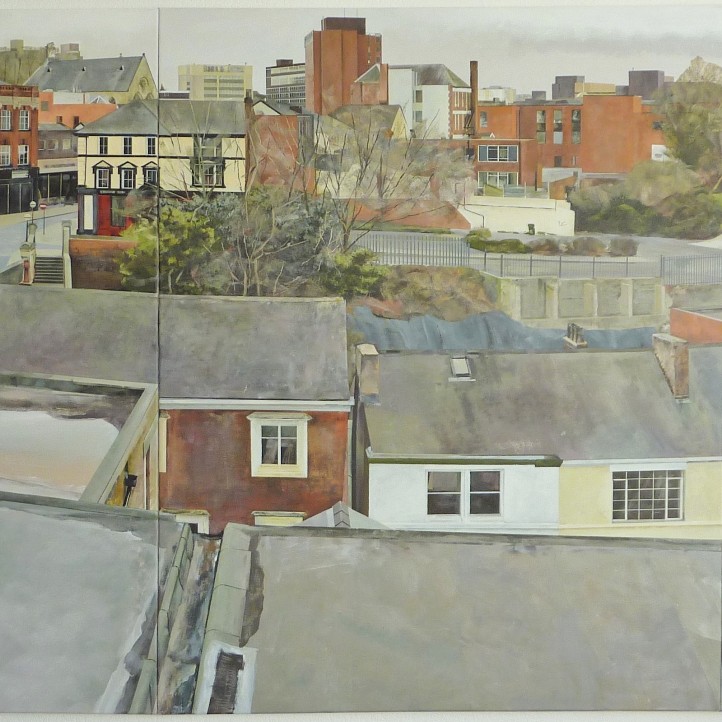Artist’s Statement
I am a researcher whose products can be in painted or constructed in many other formats. My extensive experience of art history and paintings on canvas motivates me to pursue the possibilities of stereo vision in two dimensions. As an urbanist, I enjoy the activity of reproducing streets and urban spaces in a form that reflects our own position within a miniature place. Like an architectural model. I think this requires a series of near impossible compromises to create realism. For this task, I employ many close up photographs to capture the elements that would not be visible in one view.
I have always been interested in spatial struggles of early Italian painting, especially as these artists tried to fit architecture and figures into the same surface area. Reference the frescoes of Altichiero in Padua or the Lorenzetti in Siena. These professional painters seem to take their architectural and sculptural responsibilities very seriously. Everything must be measured, plotted and surveyed from the foreground to background. Painters should paint the backs of things, in a way that Modernist surface expressionism does not require. The result might seem to be photo realist or Pre-Raphaelite, but I think that painting works when it is an act of careful communication, like Piero della Francesca’s ‘Flagellation of Christ’. A guided tour for the eye where some of the elements combine to create small anomalies and oddities. Surrealist accidents are never far away from this pictorial process.
My preparation is collage based using composite photographs but also includes urban sketching to engage with subject matter. Starting a canvas with only a few pencil lines all my paintings must then be constructed from layers of acrylic paint, applied with rulers, spirit levels and stencils. I have a tool kit of designer curves and templates that assist in marking the surface with their silhouettes. Multiple revisions or repainting is a constant process, painting over quite good work while holding on to the memory of previous activity to make the image more authentic. So that I believe in it. The painting stops when the space caves inwards and no paint seems to sit on the surface. Close ups reveal the use of glazes and dry brushwork across the canvas weave, mostly using a range of large flats dragged between lines of masking tape. Other tools are improvised out of card edges and rags. I photograph the work in progress and replay stop frame video as most of these works take several months to achieve. Recordings of time synthesized in one place like an archaeologically loaded surface. Making the ephemeral materials of paint and canvas into something that has value to the spectator. An object that repays a return visit.
http://dchandlersk2.weebly.com/

